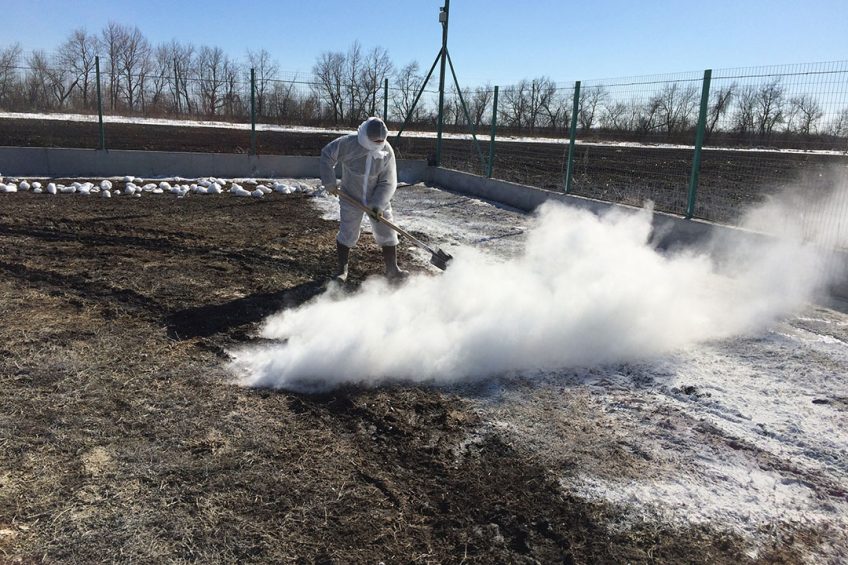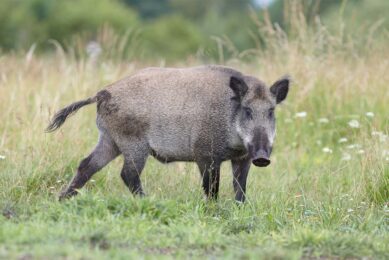ASF on-farm? Back on track in 18 steps – Part 1

African Swine Fever (ASF) arrived in China, the world’s largest pig market and has been spreading rapidly across countries, provinces, towns and counties of Asia. Now what to do in practice when the virus pops up? This is part one of a checklist for pig producers and veterinarians the first 9 of the 18 steps.
Never before in history, has African Swine Fever virus (ASFv) had the opportunity it is having right now. Up until recently, the virus was spreading slowly through different pig populations. What happened in 2018, however, was completely new. The virus moved thousands of kilometres and infected thousands of animals in a very short period of time. In addition, environmental conditions changed as the presence of the virus in the environment is likely to be much higher. Still, the mechanism to control the infection, to avoid it spreading and to manage the farm after an outbreak remains the same. It is just a matter of applying all the measures more vigorously.
The aim of this article is therefore to help vets and producers to do so, once confronted with an ASF infection. It contains a summary of 18 steps that can be followed, either to control the spread of the disease on-farm once it is infected or to prevent the virus entering onto other farm sites. In addition, the article provides information about the best way to repopulate a farm.
This paper is based on the experience of controlling ASF in large pig production systems and also the knowledge acquired after travelling to China on various occasions trying to answer questions from colleagues and producers. It’s therefore good to keep in mind that some recommendations might vary under different circumstances or scenarios.
In short, the article revolves around two questions: What to do when facing an ASF outbreak? And what is the best protocol to follow starting a proper repopulation?
 Speed is key
Speed is key
In the case of ASF, acting fast is crucial, so detection, quick actions and removal of the source of infection are imperative to avoid further viral spread within the production system. It is recommended that pig movements involving the affected site are traced back for 15 days. Moreover, farms that had any epidemiological link (pigs and/or trucks) with the affected site should be placed under a strict quarantine and testing must be done to rule out ASF infection.
 Trucks need disinfecting
Trucks need disinfecting
Live-haul trucks that have been involved in the latest pig movements from the affected site should be sent for a complete and thorough washing and disinfection immediately and allow time for disinfectant contact and drying.
 Creating a perimeter
Creating a perimeter
In order to contain the spread of the virus in a systematic way, 3 areas or perimeters around the affected site should be defined. Clear definitions between all stakeholders about distances and perimeters is essential.
- The first area, containing the affected site(s), is called the ‘outbreak zone’, having a 1km radius;
- The second area, called the ‘control zone’, has a 3-5 km radius around the affected site;
- The third area is called ‘surveillance zone’. This has a radius of 10km or more, depending on geographical conditions and swine density.

 Forbidden in the control zone to…
Forbidden in the control zone to…
- Allow entrance to any external people except those required for eliminating and disinfecting, state vets and residents;
- Sell or move pigs to outside the zone;
- Slaughter any pigs, sell carcasses and by-products;
- Sell feed for swine consumption;
- Conduct any incoming and outgoing transports, except those connected to ASF elimination and/or life support of residents.
 Imperative in the control zone to…
Imperative in the control zone to…
- Install check-points and disinfection barriers at the entrances and exits of the affected site and the control zone;
- Disinfect any vehicle exiting the control zone by covering all the external surfaces of the vehicle and ensure a minimum of three hours of exposure (see also point 9);
- Change clothing and shoes at the checkpoint before entering the control zone. No street clothing and shoes should be allowed into the control zone;
- Eliminate any stray animals.
 Imperative on the affected site to…
Imperative on the affected site to…
- Eliminate all pigs and pig products, without blood being spilled, as ASFv is found in high quantities in blood. A method can be an intramuscular injectable product composed of succinic acid bis-dimethyl sulfate;
- Dispose of all corpses (dead and killed pigs), products and animal waste in a 4m deep pit;
- Only remove pigs from the pens or crates once the pit is ready for burning and burial. It is important to minimise the chances of vultures feeding on carcasses;
- Start with the most affected area of the farm to limit the amount of pigs getting infected and minimise the viral load in the environment;
- Burn all corpses and slaughter products, with help of e.g. wooden materials, straw or rubber materials.
- Cover the pit, after burning, with dirt and a layer of disinfectant applied to the surface.
- Keep staff involved in euthanasia, washing and disinfection, on-site until their task is finished;
- Implement a strict showering in/out protocol plus change of clothes in case keeping staff on-site is not feasible;
- Conduct fumigation for rodent and tick control to prevent mechanical and/or biological spread of the virus.

 Proper disinfection
Proper disinfection
ASFv is a complex ‘DNA enveloped’ virus and is resistant to the environment. It is possible to create a bad environment to reduce its survival capacity. For a disinfectant to be fully effective, it is critical to…
- Follow the manufacturer’s instructions;
- Remove all organic material with alkaline detergent;
- Allow time for drying before applying disinfectant;
- Ensure proper time of exposure;
- Increase water and room temperature when possible.
 Disinfectants proven to inactivate ASFv
Disinfectants proven to inactivate ASFv
- Sodium hydroxide;
- Sodium hypochlorite;
- Calcium hypochlorite;
- Glutaraldehyde;
- Citric acid;
- Iodine monochloride;
- Formaldehyde;
- Quaternary ammonium compounds;
- Oxidisers like potassium peroxymonosulfate (Virkon S).
 Facility disinfection
Facility disinfection
All materials used for the pig elimination have to be disinfected, as well as the farm facilities. Those materials that cannot properly be disinfected should be burnt with the pig carcasses as they are a potential danger. Farms with multiple rooms should start disinfecting from the most affected part and work their way outwards.
 Beheer
Beheer





 WP Admin
WP Admin  Bewerk bericht
Bewerk bericht